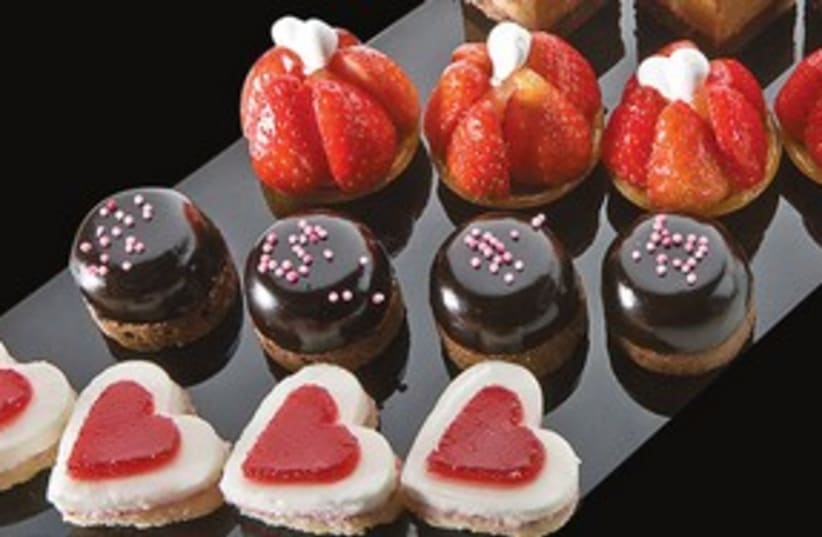Brian Wansink is director of Cornell University’s Food and Brand Lab and author of “Mindless Eating: Why We Eat More Than We Think.” He says:“Valentines Day is a triple threat when it comes to emotional eating. It often combines good candy, convenience and a license to eat. Because it happens once a year, we think we have the license to either celebrate or commiserate. Candy – especially chocolate – is used to either maintain our good mood or to cure a bad mood. The best secret to have your chocolate and to eat it, too, is to make sure the candy is at least six feet out of reach from where you sit. Our studies with chocolate in candy dishes show you'll eat about 125 calories less if you move the bowl.”One study published by Wansink found that people feeling sad tend to eat more unhealthy comfort foods. For instance, a test group that had watched the movie “Love Story” had eaten 36 percent more popcorn than another test group that had watched the upbeat movie “Sweet Home Alabama.”Readers can find more information here.Kelly Musick: Cohabitating Valentines are happier than wedded couplesWhen it comes to married versus cohabitating Valentines, wedded couples experience few advantages in psychological well-being and social ties, according to a new study by Cornell University professor of policy analysis and management Kelly Musick. She says:"We found that differences between marriage and cohabitation tend to be small and dissipate after a honeymoon period. Also, cohabiting couples experienced greater gains in happiness and self-esteem. For some, cohabitation may come with fewer unwanted obligations than marriage and allow for more flexibility, autonomy and personal growth.”Readers can find more information here.Karl Pillemer: You may regret it – lessons for love and marriage from the wisest AmericansCornell gerontologist Karl Pillemer created the Legacy Project to share practical advice about living the good life from more than 1,200 individuals age 65 and older who possess what he calls “transcendental wisdom” gained from surviving the likes of war, poverty and marriage. Pillemer says:“It’s challenging to deal with regret, and for some people regrets can drag them down in later life. One very common strategy for regret prevention among the elders I interviewed had to do with finding a life partner. Over and over, elders told me that the most important thing about this critical life decision is: choose carefully, or you will regret it.”Audio and video of Pillemer’s interviews with elders available here.Sharon Sassler: Fear of divorce preventing many young adults from tying the knotWith the share of married adults at an all-time low in the United States, new research by Cornell University professor of policy analysis and management, Sharon Sassler, offers clues about what's preventing young adults from tying the knot.Roughly 67 percent of those participating in a portion of the study expressed concern about divorce. Most frequently mentioned was a desire to "do it right" and marry only once. The belief that marriage was difficult to exit was mentioned nearly as frequently, with examples of how divorce caused emotional pain, social embarrassment, child custody concerns, and legal and financial problems.Readers can find more information here.Wayne Harbert: From venom to Venus: the origin of those putrid pet namesCornell professor of linguistics, Wayne Harbert, explains the meaning behind words of passion and love. He says:“When was a lemon sweet? Why is my darling such a little dear? What sort of poison did Venus deliver? A ‘lemmon’ was sweet in Middle English, where it meant ‘sweetheart.’ Darling originally meant, literally, ‘little dear.’ Venus and venom come from the same root, meaning ‘love.’ In Latin, ‘venenum,’ from which venom comes, originally meant ‘love potion,’ but over time came to mean ‘poison.’“Terms of endearment come into and out of fashion, but some features remain constant over time. When a love-starved youth in a 16th century poem by William Dunbar calls his sweetheart ‘my curldodie,’ ‘my sweet possodie,’ ‘my wallie gowdie,’ ‘my tyrlie myrlie,’ ‘my crowdie mowdie,’ ‘my clover,’ ‘my heart,’ ‘my tender girl,’ ‘my honey-sop,’ ‘my kid,’ ‘my bonny babe,’ we can still recognize it as love-talk, even when the literal meaning escapes us.”John Henderson: Chocolate began not as sweet treat, but as frothy, beer-like brewCornell anthropologist John Henderson explains the origin of chocolate, which dates back to before 1000 B.C. in Mesoamerica. He says:“The original chocolate was not the familiar confection made with milk and sugar. It was a frothy drink, more likely to be gingered up with chili peppers than sweetened. It was served at just about every important social and ritual event, and it was used as a medicine.”Readers can find more information here.
Brian Collins: Keep the chocolate away from FidoBrian Collins, professor of medicine at the Cornell University College of Veterinary Medicine, cautions dog owners about the toxicity of chocolate. He says:“While we humans enjoy chocolate and suffer little more than the risks of cavities and weight gain, our canine companions have a lot more to worry about. Around holidays such as Valentine's Day dogs frequently help themselves to our confections and often with serious consequences.“There's no point ‘sugar-coating’ the gravity of chocolate toxicosis in dogs —their symptoms can range from mild gastrointestinal upset to life-threatening heart arrhythmias to seizures and even death. We eat darker chocolate for its purported health benefits but for dogs the opposite is true — the darker the chocolate, the more dangerous it is for dogs. Keep it out of your pup's reach!”This article was first published on www.newswise.com.
